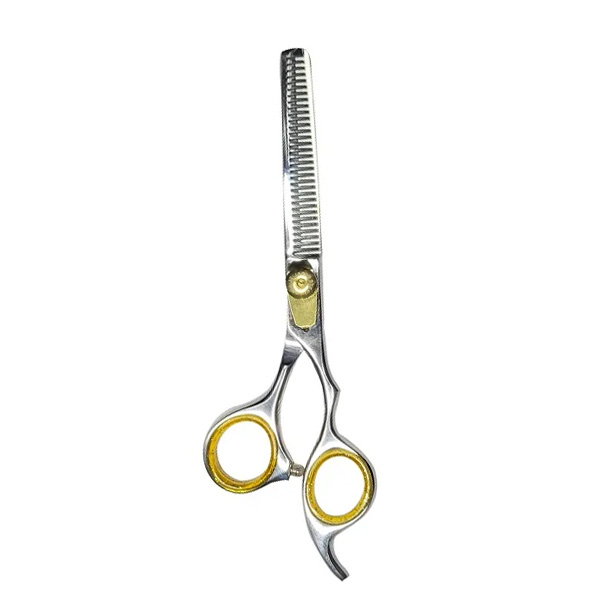Thinning scissors and texturizing scissors are both specialized tools used in hair cutting, many people think that they are the same thing, but in reality, they serve slightly different purposes
1. Thinning Scissors
Thinning scissors, also known as thinning shears or blending scissors, have teeth on one or both blades. These teeth are designed to remove some of the hair, typically in a controlled manner, to reduce volume and create a softer blend between different sections of hair.
They are commonly used to thin out thick hair, create texture, or soften harsh lines in a haircut. Thinning scissors can also help in blending layers for a more natural look.
2. Texturizing Scissors
Texturizing scissors, also referred to as texturizing shears or texture scissors, have specialized teeth or blades with gaps and varying lengths. These scissors are used to add texture to the hair by creating irregular or uneven edges.
They can be used to create choppy layers, add movement to hairstyles, or enhance volume by selectively removing small sections of hair without altering the overall length.
Key Differences
Purpose: Thinning scissors are primarily used to reduce thickness and blend hair sections smoothly, while texturizing scissors are used to add texture and create movement or volume.
Blade Design: Thinning scissors typically have finer, straight-edged teeth, while texturizing scissors may have more varied teeth lengths or irregular blade designs to create different textural effects.
Effect on Hair: Thinning scissors result in a softer, more blended appearance by reducing bulk, whereas texturizing scissors create more defined texture and structure within the hair.
Both types of scissors are essential tools for hairstylists, allowing them to achieve various cutting techniques and styles depending on their clients’ hair type and desired look.



